How to bring water into the house from the mains - step-by-step guide
Many owners of private houses are interested in how to bring water from the water supply into the house. The most economical and easiest way is to connect to the central water supply (if it is present in the given locality).
There will be troubles associated with paperwork and installation of pipes, but in the future there will be no problems with water supply. Some of the work can be done by hand to save money.
Content:
- Choosing a water source
- Design rules
- Choice of pipes
- External and internal work
- Pumping station connection
- Installing a hydraulic accumulator
- Water purification equipment
Choosing a water source
First of all, you need to decide what will serve as a source of water. There are certain norms according to which each person living in the house must be provided with water in the calculation of at least 30 liters per day. Also, country houses usually have orchards and vegetable gardens that need to be watered. Obviously, the need for water among the owners of country houses and land plots is quite high.
Therefore, the source of water supply must be chosen very carefully.
There is a simple way to bring water into the house from the water supply system - to connect to the central water supply, having received permission for this. In terms of cost, it is not too expensive, convenient, practical and safe. This source has its advantages:
- Water usually goes through all kinds of checks and purification. You don't have to worry about its quality. It is almost impossible to meet the causative agent of diseases in such water.
- It's pretty economical. Despite the fact that you will have to purchase pipes, meters, mixers and other equipment, it will be cheaper than drilling a well.
- This system is very convenient. Pipes can be laid quickly, there is no need to look for a river or other source of water on the ground.
- For those who spend the whole summer or all year round in a private house, the pressure of the water is very important. In this case, it will be strong and permanent.
The difficulty of this method in the bureaucratic system. You cannot independently connect to the central highway. This requires permission and many documents. However, not the whole process is controlled. The owner of the house receives papers and diagrams with the recommended laying of pipes in his hands. He can do the rest of the work independently. It should be borne in mind that the central pipe may be old, which means that you will have to face a water cutoff due to repairs. But these are temporary difficulties.
The decentralized method does not require so many papers. Water comes from the nearest reservoir, well or well. However, there are many requirements here: the well should be located at a certain distance from the house, as far as possible from the cesspool. Also, the difficulty is that it is not always possible to know for sure whether this source will satisfy the requirements, whether there will be enough water and what quality it is. In order for the water pressure to be sufficient, you need to purchase and install a powerful pump.
Useful video on how to conduct water to a private house:
Design rules
Pipes can be laid in various ways. For example, if tenants visit the house only in spring and summer, then you can leave the pipes outside, which is somewhat easier and cheaper.For those who live in a country house all the time, pipes that are located below the freezing level of the soil will be the best option. That the pipes do not freeze, you need to take care in advance.
It is very important to draw up and sketch a diagram.
This will help not only to more accurately determine the optimal option for laying pipes, but also to calculate how much material is needed, how long it will take to carry out all the work, what size the trench needs to be dug. This is not just planning, but a necessary step, thanks to which many mistakes and problems can be avoided.
At the design stage, the following nuances must be taken into account:
- It is necessary to make calculations according to certain formulas. These calculations relate to the water pressure. If the house on the 2nd or 3rd floor has a bathroom, shower, the pressure there must be sufficient. Such calculations are required for a decentralized water supply. If the water comes from the central pipe, the head is usually always good.
- You need to calculate the number of collectors, pumps and filters that will have to be installed.
- Each element of this system must be in a certain place. It is necessary to think over these places and the distances between them in advance so that it is convenient to use the water supply system.
- It is necessary to determine the type of wiring: collector or serial. The first method ensures uniform pressure in the pipes, and the second saves on materials. If the house is small and has a small number of people living in it, a sequential wiring system would be the best option.
- When making measurements, you need to use one tape measure and it is desirable that all measurements were carried out by one person. This will help avoid discrepancies.
It is very important to consider all the details. If a mistake was made during the design, you can notice it after installation. This will lead to unnecessary problems and costs. If you have any doubts or questions, it is better to consult with a specialist in advance than to redo what has already been done wrong.
Choice of pipes
A very important step is the selection of pipes and materials. The strength and durability of the structure depends on the correct selection of parts and material. High requirements are imposed on water pipes: they must be resistant to chemical and temperature effects, sufficiently strong, but at the same time not heavy.
Pipes are the main element of the water supply system. Most often, pipes are chosen from the following materials:
| Material | Features of the |
| Steel | Steel pipes have been very popular for a while due to their increased strength. Steel is not afraid of mechanical stress and lasts a long time, but there are also disadvantages. Steel pipes are difficult to install; not everyone can install them on their own. Also, steel rusts over time due to moisture, so they will have to be changed. |
| Copper | Copper pipes are durable, less prone to corrosion, but their cost is much higher than steel pipes. Due to their high cost, they are not used very often. They are also difficult to install, and they are not laid in the ground. But copper is renowned for its durability. Such pipes serve for decades. |
| Plastic | This is by far the most popular option. Plastic pipes are lightweight, fit well, can bend, are not afraid of environmental influences, and are also inexpensive. However, the quality of the plastic must be considered. Not all species can withstand high temperatures and hot water. Plastic tolerates any pressure well, that is, the probability that the pipe is damaged from the inside is minimal. |
| Metal-plastic | This option is durable and convenient. In the manufacture of such a pipe, the polymer material is welded to a metal frame. Metal adds strength to the structure. Thanks to the protective polymer coating, the metal part does not corrode. |
When choosing one or another material for water pipes, you need to take into account both the budget and the properties of this material.For those who have a lot of experience, but want to lay pipes with their own hands, it is better to choose polypropylene.
You can weld the joints of such pipes using a simple low-temperature soldering iron. In this case, the seams are tight. In the future, such a structure will be non-separable, but this will not cause trouble: polypropylene pipes can be easily cut and welded again. But you still need to purchase a special soldering iron.
External and internal work
The installation of water supply pipes is carried out in several stages. After a plan is drawn up, a diagram is drawn, all materials are calculated and purchased, you can start work. Of course, the design is carried out taking into account the current rules and regulations. It all starts with outdoor work. After obtaining permission, the process of installing pipes begins.
Outdoor work primarily involves digging trenches. There are several nuances to consider:
- In the central water supply pipe, you need to determine the point to which the pipe will be connected. A trench will run from the house to this point. Experts recommend starting from home, and not vice versa. It will be easier and more convenient.
- The depth of the trench must be greater than the level of freezing of the soil, otherwise the pipes will freeze in winter. If this is not possible, you need to take care of pipe insulation.
- If the distance from the house to the main highway is short, you can dig manually. If a long and deep trench is required, you will have to rent special equipment.
- There is a fairly simple way to make a small trench if the ground is soft, without stones. Several holes are made along the way, and then water is supplied with a hose. She will wash the earth herself.
- Too heavy soil will not allow digging a deep trench. In this case, the pipes can be left closer to the surface, but they can be insulated with heat-insulating materials. You also need to additionally insulate the place where the pipe enters the wall. It is here that pipes freeze over in winter most often. Cellars are very convenient in this case.
- The pipes are not laid directly in the trench. First, make a pillow of sand or rubble. Such a pillow will absorb water and sediments, take them away from the pipes so that rust does not appear on the metal and the pipes do not freeze in the cold.
- At the point where the pipe cuts into the central highway, a well is made. In case of renovation, the residents of the house will be able to shut off the water. Also, a water meter is installed near the place of the tie-in. This is a mandatory requirement of the water utility.
For internal work, a separate circuit is needed. Inside the house, plastic pipes are used, as they have an aesthetic appearance. Places for water intake and piping are outlined, as well as the installation of various devices, for example, a water heater, meters. A practical solution would be to install a boiler. In this case, residents will not be left without water even if the central water supply is cut off. In addition, the boiler helps maintain a good water pressure.
Pumping station connection
In order for the water supply system in a private house to work correctly, you need to install water purification equipment, as well as a hydraulic accumulator and a pump. First, a pumping station is connected and installed. A pump is needed to pump water from a well or other source. It is worth remembering that pumps differ in both power and type of control (manual or automatic).
When installing a pumping station, the following recommendations should be taken into account:
- The pump is sensitive to low temperatures. Therefore, a special heated room is allocated for its placement.
- During installation, a pipe is supplied to the pump from the source and a drain valve is installed. This will allow you to stop the water supply if necessary.
- First, the ejector is assembled, which is a unit with 3 connections. It is also necessary to install a water-purifying filter in one of the sectors of the ejector.
- It is important to consider the length of the pipes. It is often forgotten that the material needs to be bought with a margin, since there are various turns and ramifications.
- To prevent water leakage, all threaded connections must be tightened tightly with a wrench. Do not rely on manual twisting.
You can learn more about how to conduct a water supply system in a private house with your own hands from the video:
Installing a hydraulic accumulator
The hydraulic accumulator maintains the pressure in the water supply system. Its installation is optional. In fact, this device is a vessel, in one part of which there is water, in the other - air.
If the water runs out, the automatic system turns on the pump, which replenishes the water supply. Therefore, the pressure in the pipes does not drop. The equipment is attached to the water supply pipe using adapters and to the floor using rubber pads.
Water purification equipment
It is recommended to install a water treatment system when receiving water from a well, but even with a central water supply, it will not be superfluous. To ensure that the water is clean and safe for health, you can analyze and then select filters.
Several filters are installed depending on how clean water the owners of the house want to receive. Installation of filters in the water supply system is carried out after installing the accumulator.



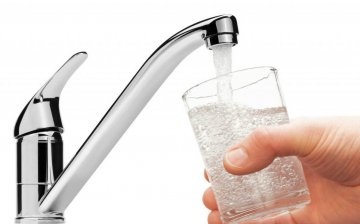
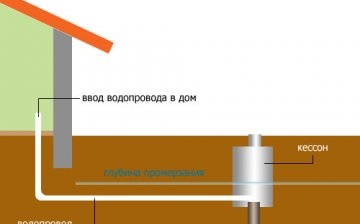

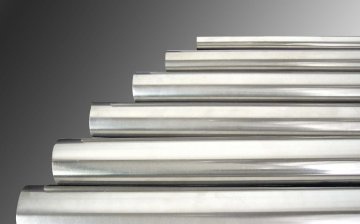

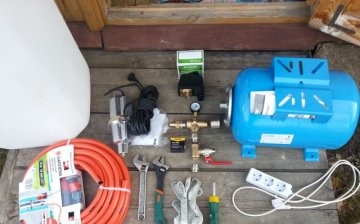






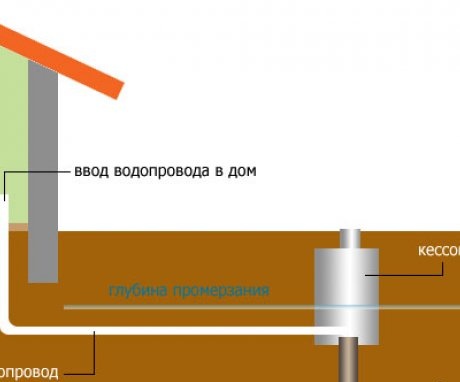
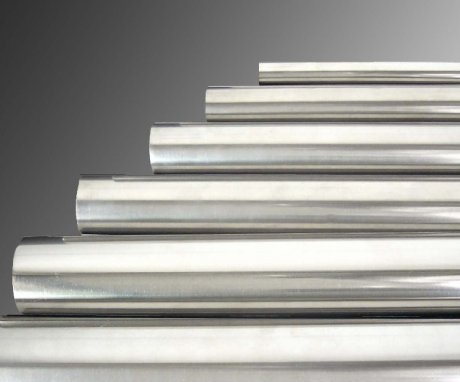


Our house has long been running water and the pipes are all very old, they need to be changed, but no one does it. How good it is to have your own house, if its repair and water depend only on you.
I am probably very lucky in this sense, because we have centralized water supply in the country and at the same time, even without meters. He connected water to the house using metal-plastic pipes, and dug a trench for them at a level of 60 centimeters (the soil freezes by about 40-50).